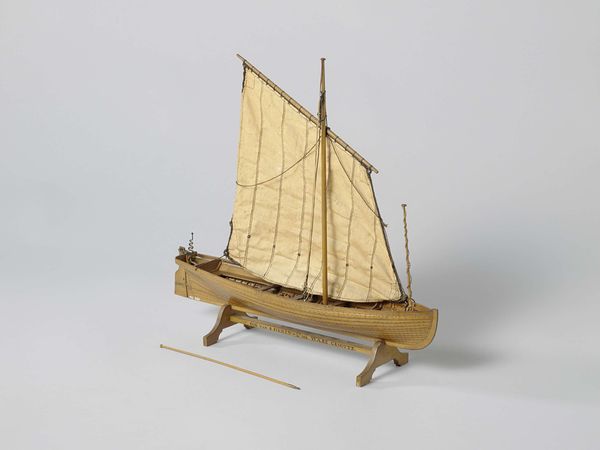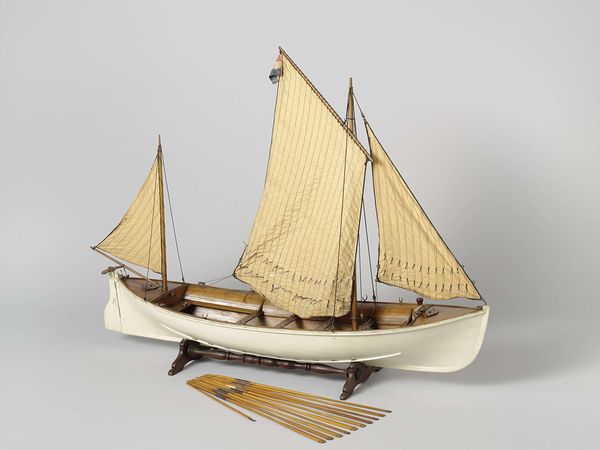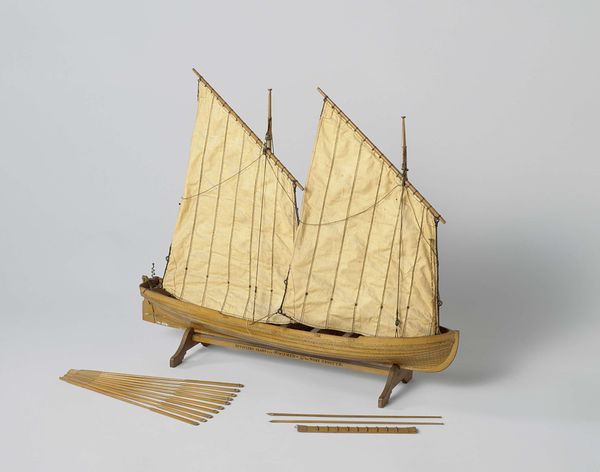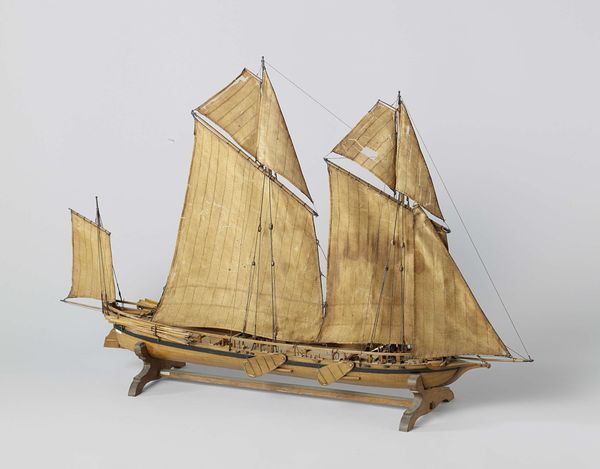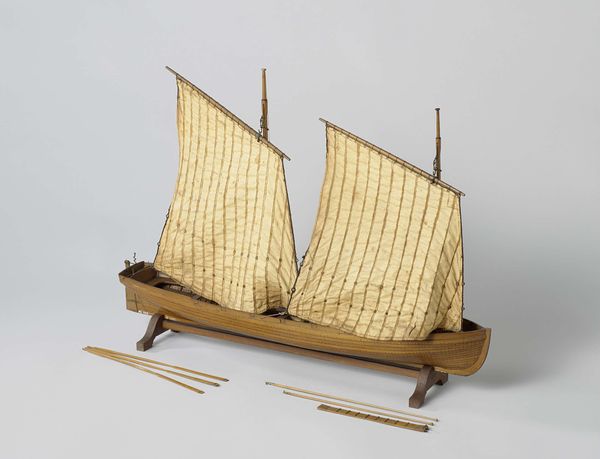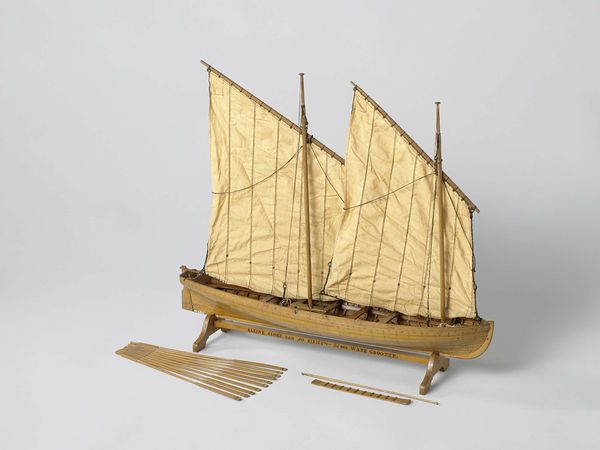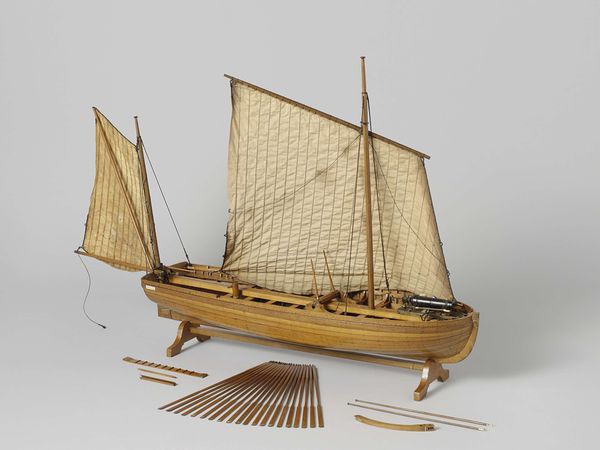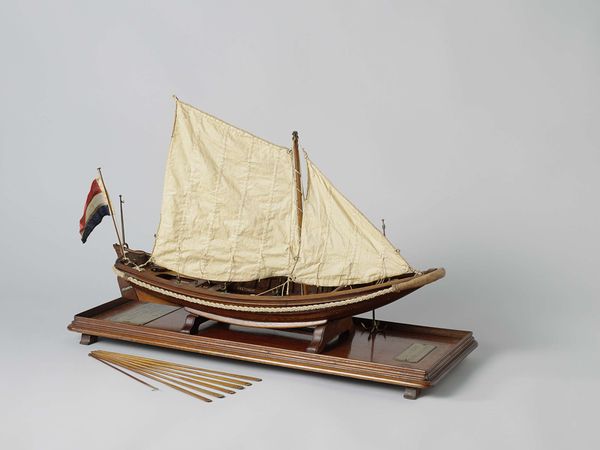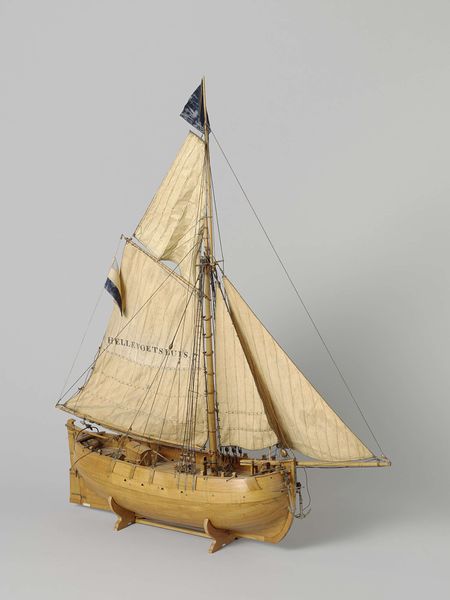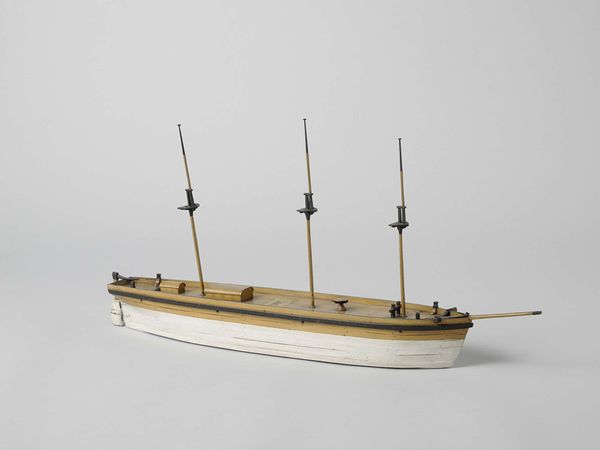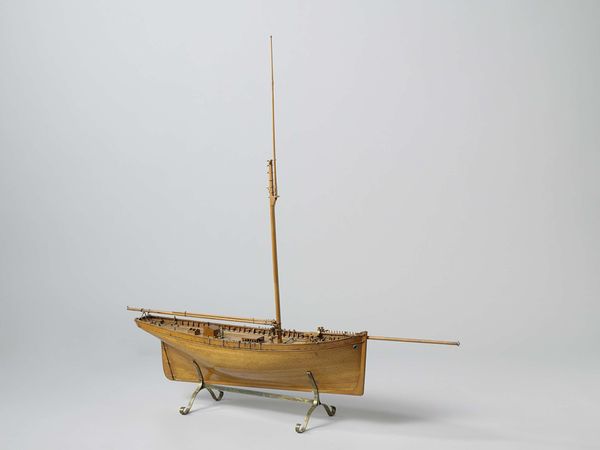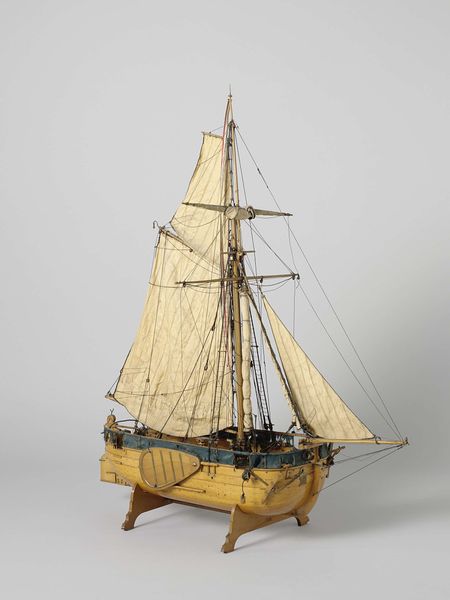
sculpture, wood
#
historical design
#
sculpture
#
wood
Dimensions: model height 65 cm, model length 89 cm, model width 17.2 cm, packaging capsule height 79 cm, packaging capsule width 99 cm, packaging capsule depth 21.5 cm
Copyright: Rijks Museum: Open Domain
Curator: We're looking at "Model of a Lifeboat," created between 1865 and 1876, and attributed to Adriaan Rosel. The piece is a wood sculpture. What are your first impressions? Editor: It strikes me as incredibly precise, almost obsessively so. The scale is quite miniature, yet the level of detail suggests a profound reverence for the craft. Curator: Indeed. Rosel's work demonstrates a fascinating confluence of form and function. Observe the clean lines of the hull, juxtaposed with the delicate rigging of the sails. Semiotically, the vessel itself represents rescue and safety, rendered through careful geometric forms and shapes. Editor: And it's important to think about this representation through the labor involved. I’m wondering about the person or people who were producing the ropes or shaping the wood in this case. The historical period is really going to be crucial for that social and material information, right? Curator: Precisely. I would posit the texture also carries meaning. The polished wood provides a sensory appeal which speaks of care. I notice the careful detail of the sails. Their woven construction gives them textural depth which subtly contrasts the boat's smooth white exterior. The formal contrast enhances our appreciation. Editor: It highlights this connection between artisanal and industrial production. Because obviously in that time, there was mass production, and this isn't it. So the kind of historical value is related to thinking through individual workmanship, and not only the design. This relates to the class origins too of design. Curator: Absolutely. By appreciating Rosel's composition, which displays balanced forms with attention to detailing across elements such as the hull, rigging, and sails, we understand that objects transcend mere utility, and this creates its own context. Editor: A crucial context is missing, I think, in focusing too closely on its "balance" or formal aesthetic. It would really interesting to contextualize where the work happened and in what labor conditions the sculpture itself was crafted to contextualize Rosel’s craft and the other anonymous hands. Curator: I see your point, focusing solely on aesthetic appeal isolates it from crucial socio-economic considerations. Still, it seems the model achieves balance in its overall impact. This balance serves both formal and functional concerns through balanced formal elements. Editor: Agreed. In this miniature world, craftsmanship echoes historical forces of production. Thank you for highlighting a path to link those different worlds and forces.
Comments
No comments
Be the first to comment and join the conversation on the ultimate creative platform.

